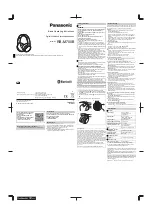
Functions and wireless technology
7190_en_02
PHOENIX CONTACT
1-5
1.2.3.2
Attenuation due to obstacles
The table below lists recommended values for typical obstacles, which should be viewed as
guide values. In addition, factors such as the moisture content in walls or leaves or the type
and execution of reinforcement in concrete have a considerable effect on the actual
attenuation of radio waves.
1.2.4
Antenna gain
The antenna gain is a measurement of the gain in signal strength compared with an isotropic
omnidirectional antenna. The isotropic omnidirectional antenna is an imaginary ideal
antenna, which has the same properties in every direction. The gain of an isotropic
omnidirectional antenna is 0 dBi EIRP (Equivalent Isotropic Radiated Power).
Figure 1-4
Antenna characteristics
Table 1-2
Material-specific attenuation (recommended values)
Material
2.4 GHz frequency band
Rain/snow at 50 l/m
2
per hour
0.02 dB/km
Fog
0.02 dB/km
Thin walls
2 to 5 dB
Brick wall
6 to 12 dB
Concrete wall
10 to 20 dB
Concrete ceiling
20 to 40 dB
Hedge/bush 2 to 4 m
10 to 15 dB
Double-glazing
25 to 35 dB
Forest 30 to 50 m
30 to 50 dB
NOTE:
Antennas in outdoor installations must be within the range of a lightning arrester.
All cables leading into buildings from outdoors (antenna cables) must pass through
lightning protection equipotential bonding systems. The requirements for lightning
protection systems according to VDE 0182 or IEC 62305 must be observed.
Phoenix Contact offers an extensive range of products for surge protection
(
www.myblitz.de
).
-10
-6
-3
0
0
30
60
90
120
150
180
-150
-120
-90
-60
-30
0
+3
+5
+10
0
30
60
90
120
150
180
-150
-120
-90
-60
-30
Isot
r
opic o
m
nidi
r
ection
al a
ntenn
a
0 dBi
P
a
ne
l a
ntenn
a
10 dBi
719000010














































